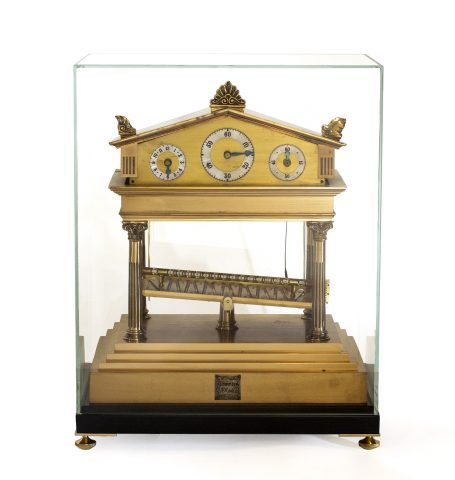1970s Congreve Clock

A fine example of a brass rolling ball clock, known as a Congreve clock, by Thwaites & Reed, London, dated c. 1970. These clocks are mesmerising to watch.
The eight-day fusee movement which is contained under the pediment drives three dials for seconds, minutes and hours.
The timekeeping is controlled by a steel ball following a fifteen second zig-zag track on a tilting table. When it reaches the end, it operates a trip lever which inverts the table and reverses the motion of the ball. Hence the angle of tilt governs the speed of the ball’s travel across the table.
At each point of the track there is a corresponding number showing in a row suspended above it – As the lever at either end of the table is activated, so the numbers showing along this line increase; first 1-15, next 16-30, then 31-45, and 46-00.
The tilting table is contained within an architectural brass case. The pediment houses the fusee clock movement below a pitched roof, over three silvered dials for hours, minutes, and quarter-minutes. It rests on Corinthian corner pillars and is raised on a stepped base applied with a plaque signed Thwaites and Reed.
The ebonised wood plinth has adjustable feet and sits beneath a glass box, which replaces the plexiglass cover that the clock was originally sold with which had lost its translucency over time, as they tend to.
- Height: 43cm (17inches)
To be overhauled and guaranteed.
Price includes delivery within mainland UK.
It should be noted that these clocks are not great timekeepers, but they do have enormous aesthetic appeal.